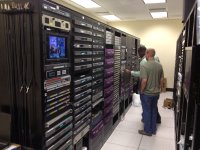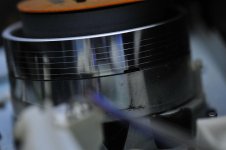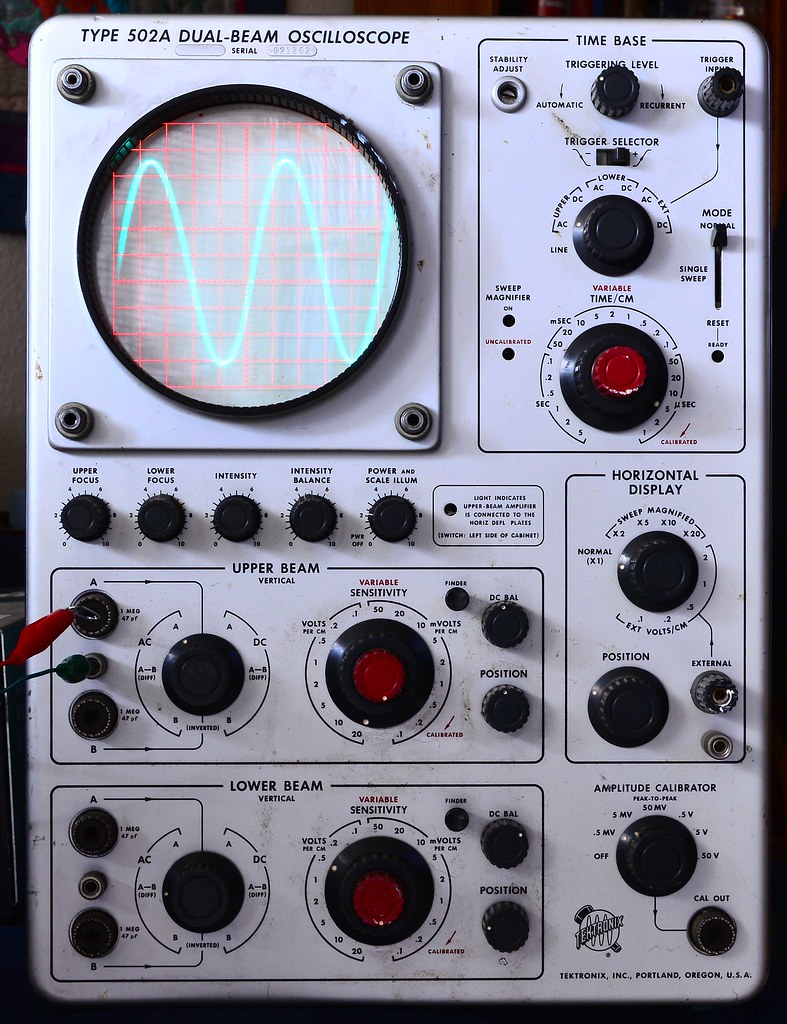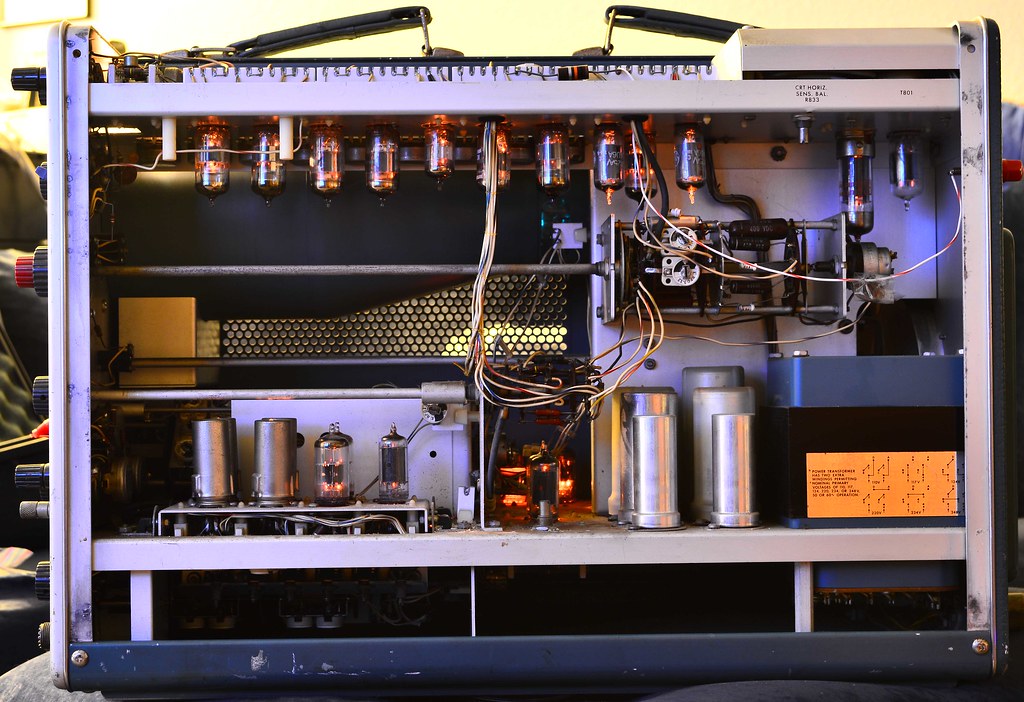You are using an out of date browser. It may not display this or other websites correctly.
You should upgrade or use an alternative browser.
You should upgrade or use an alternative browser.
Post you old radio/tv/electronics shot.
- Thread starter SteveL54
- Start date
john*thomas
Senior Member
That's my dad's thing. He's really big into the old tube amps. When I was very young and my mom and dad was just starting out my dad went to night school for television repair. He ended up landing a different job but was always fixing friends and families televisions. He liked visiting so he never actually charged for his services. He still has his old tools and portable tube tester.
There was always 4-5 old televisions in the garage he would scavenge for parts when people gave one to him because of a bad picture tube or something.
He has almost no call for working on the old televisions any longer but as you likely know, the old tubes amps are still very popular.
There was always 4-5 old televisions in the garage he would scavenge for parts when people gave one to him because of a bad picture tube or something.
He has almost no call for working on the old televisions any longer but as you likely know, the old tubes amps are still very popular.
Mfrankfort
Senior Member
Orange guitar Tube amps are still the best out there. 
Don Kuykendall_RIP
RIP :(
BackdoorArts
Senior Member
I like them for old tubes I can hopefully swipe for audio/guitar amplifiers!! 
Orange guitar Tube amps are still the best out there.
Oh, I don't know. I miss the days when I used to lug my SVT with an 810 cab.
Something about the glow and heat of those (6) 6550's
I wish I had pics of those innards.
I certainly don't miss the 85# weight, though.....
Just-Clayton
Senior Member
Bob Blaylock
Senior Member
Don Kuykendall_RIP
RIP :(
This is the first scope I used in the 70's at the TV station I worked for. It was fairly new at that time.
Bob Blaylock
Senior Member
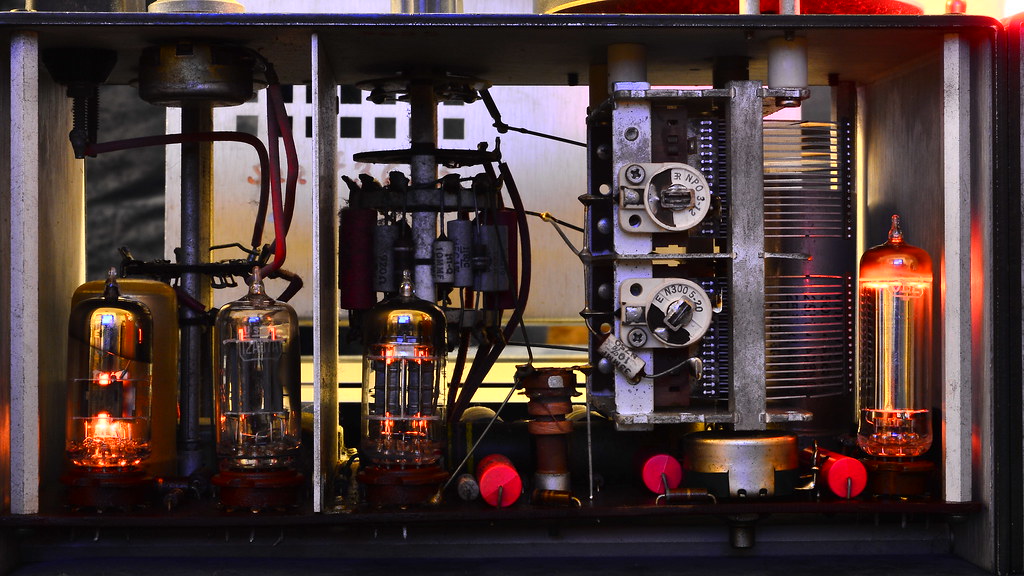
GRC_1210-C_20140207_005044 by bob_blaylock, on Flickr

VacuumTube_20140209_091408 by bob_blaylock, on Flickr
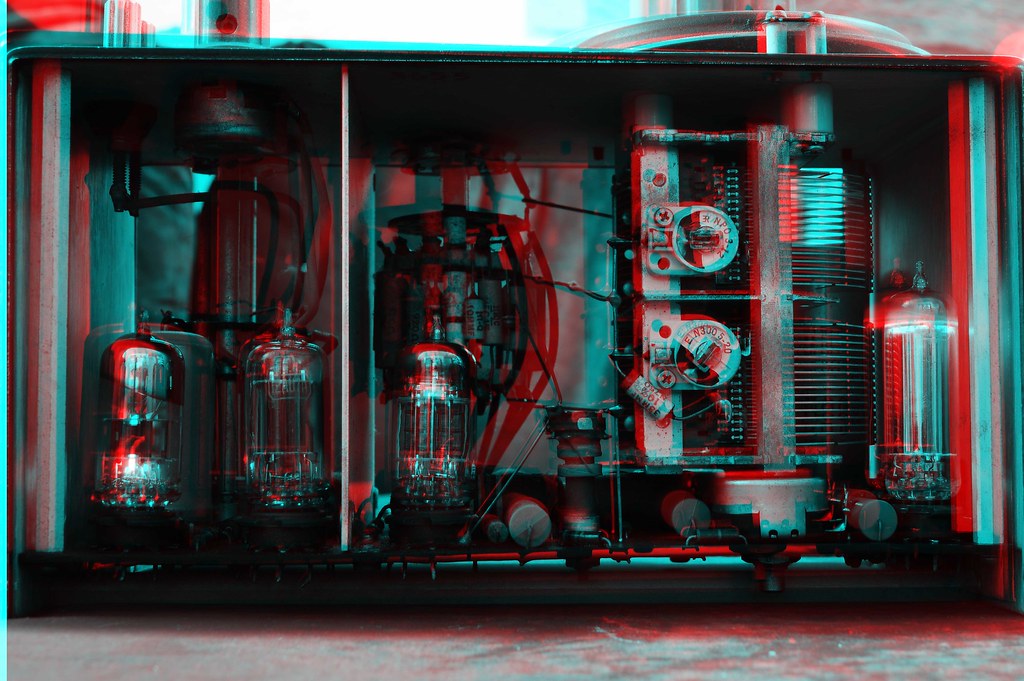
GRC_1210-C_3D_20140209_091943 by bob_blaylock, on Flickr
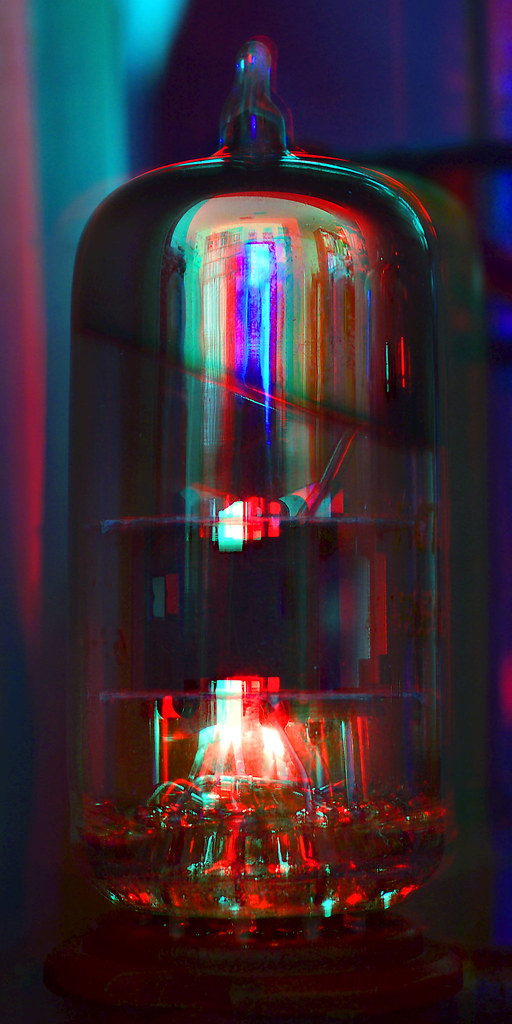
VacuumTube3D_20140209_092938 by bob_blaylock, on Flickr
Bob Blaylock
Senior Member
This is the first scope I used in the 70's at the TV station I worked for. It was fairly new at that time.
Are you sure of that? The Tektronix 502A was an early 1960s-vintage oscilloscope—mostly vacuum-tube based, with just a very few of the newfangled transistors. It was the time when vacuum tubes were just barely beginning to give way to semiconductors, that would rapidly replace them. By the 1970s, weren't nearly all new electronics mostly semiconductor-based? I would expect that the 502A would have been long obsolete by then.
Don Kuykendall_RIP
RIP :(
Are you sure of that? The Tektronix 502A was an early 1960s-vintage oscilloscope—mostly vacuum-tube based, with just a very few of the newfangled transistors. It was the time when vacuum tubes were just barely beginning to give way to semiconductors, that would rapidly replace them. By the 1970s, weren't nearly all new electronics mostly semiconductor-based? I would expect that the 502A would have been long obsolete by then.
I worked for a public tv station. We still had B&W video cameras. It was a few years before we upgraded to color. We were still in the 1 inch video machines.
Sent from my iPhone using Tapatalk 2
Bob Blaylock
Senior Member
I worked for a public tv station. We still had B&W video cameras. It was a few years before we upgraded to color. We were still in the 1 inch video machines.
What I am questioning, I suppose, is your description of an oscilloscope like mine as having been “fairly new at that time” in the 1970s. I don't know when Tektronix stopped making this model, but I am fairly sure that in the early-to-mid 1960s, vacuum tubes were very rapidly giving way to semiconductors, such that it seems unlikely to me that they'd have still been making them like mine in a period where one could have been “fairly new” in the 1970s.
I do not doubt that many of them continued to be in use for a long time after that. Mine is over forty years old, and it still works. In fact, for most applications, I find it preferable to the one other, much-more-modern oscilloscope that I own.
This is a mid 1990s-vintage Tektronix T202. It was one of the very earliest oscilloscopes on the market to not be based on a cathode-ray tube (CRT). Compared to the 502A, I find the display on this one to be lacking in contrast and clarity, and the controls to be obscure and non-intuitive. Whenever I set out to use this one, I have to spend some time fumbling around with it just to remember the basics of how to use it.
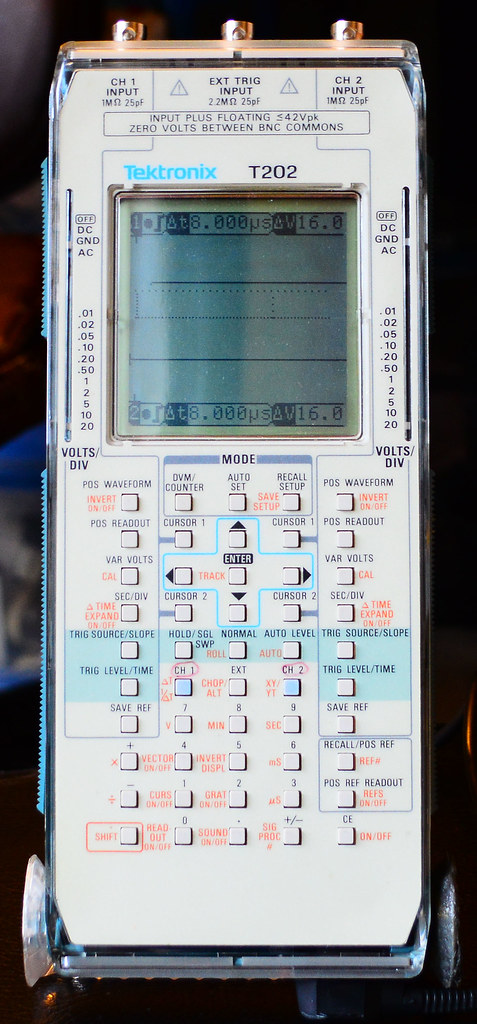
TektronixT202_20140209_122350 by bob_blaylock, on Flickr
Don Kuykendall_RIP
RIP :(
What I am questioning, I suppose, is your description of an oscilloscope like mine as having been “fairly new at that time” in the 1970s. I don't know when Tektronix stopped making this model, but I am fairly sure that in the early-to-mid 1960s, vacuum tubes were very rapidly giving way to semiconductors, such that it seems unlikely to me that they'd have still been making them like mine in a period where one could have been “fairly new” in the 1970s.
I do not doubt that many of them continued to be in use for a long time after that. Mine is over forty years old, and it still works. In fact, for most applications, I find it preferable to the one other, much-more-modern oscilloscope that I own.
This is a mid 1990s-vintage Tektronix T202. It was one of the very earliest oscilloscopes on the market to not be based on a cathode-ray tube (CRT). Compared to the 502A, I find the display on this one to be lacking in contrast and clarity, and the controls to be obscure and non-intuitive. Whenever I set out to use this one, I have to spend some time fumbling around with it just to remember the basics of how to use it.

TektronixT202_20140209_122350 by bob_blaylock, on Flickr
They were made through 1971 I think. See this page Oscilloscope 502A Equipment Tektronix, Portland, Oregon, bui
For model Oscilloscope 502A, Tektronix, Portland, Oregon
|
| ||||
| Year: 1963–1971 | Type: Service- or Lab Equipment |
Bob Blaylock
Senior Member
They were made through 1971 I think. See this page Oscilloscope 502A Equipment Tektronix, Portland, Oregon, bui
I suppose you could be correct. Seeing a link, I was hoping it would be to a source that I could consider more authoritative, but then I have to admit that nearly all my claims about the age of this model are based on assumptions. The only solid datum I have is the 1963 copyright date in the manual, which clearly indicates an early point in this model's manufacturing life—probably the beginning.
Other than that, I can observe that while mostly vacuum-tube-based, my 502A does have a small number (perhaps three or four) of transistors, and I know that once transistors came into use, they and other semiconductor-based components very quickly obsoleted most uses of vacuum tubes. From there, I get to the assumption that by the time the 1960s decade came to an end, nearly all electronics were semiconductor-based, and I thought it therefore unlikely that Tektronix would still be making vacuum-tube-based oscilloscopes. Certainly, by this point, tabletop tube-based AM/FM radios had largely given way to pocket-sized (at least for large pockets) transistor radios. I believe that even crude integrated circuits already existed by the mid 1960s.
Perhaps there was an issue of perceived quality. This was not a time when electronic technology was perceived as advancing as rapidly as it now is; where something made today is going to be considered obsolete in a year or two.
I have no doubt that by the beginning of the 1970s, the technology was ripe for making oscilloscopes that were mostly semiconductor-based, that wee smaller, lighter cheaper, and performed better than their vacuum-tube-based ancestors. But perhaps there was a wide-spread perception that handmade vacuum-tube-based oscilloscopes were somehow of higher quality than more modern mass-produced transistor-based models, and a large enough market of consumers willing to continue to pay the higher prices for that perceived quality. Being a company that has always been perceived as a manufacturer of the highest-quality of equipment, it seems very possible that Tektronix might have been happy to make oscilloscopes this way as long as that was what the highest-paying customers wanted. I know that to this day, in the audiophile culture, there is a strong base of those who are absolutely convinced that vacuum-tube-based equipment sounds better than semiconductor-based equipment. I don't know if there is any objective scientific data to back up this belief.
It now occurs to me, comparing the two oscilloscopes that I own—The 502A which represents a mature example of a long-obsolete technology, and the T202, which represents a very immature form of a much newer technology—that as I've mentioned, I much prefer, in most cases, using the 502A over the T202. By the time the 502A was designed and built, they knew how to make a very good vacuum-tube-based, all-analog oscilloscope. The T202 was at the very early edge of non-CRT-based, all-digital oscilloscopes, and it is clear that at that point, they had yet to figure out how to make a good non-CRT-based, all-digital oscilloscope. I think it can fairly be said of the T202 that in most cases, a slightly more primitive oscilloscope, based on more primitive, but more mature technology, would be preferable to it. It's not obvious to me that any similar issue would be involved in the transition from vacuum tubes to transistors, but just because no such issue is obvious to me doesn't mean that there wasn't such an issue. Perhaps there really was a time, around the late 1960s or early 1970s, where most people found the mature vacuum-tube-based oscilloscopes to be preferable to the newfangled transistor-based ones, in much the same way that I would find a CRT-based oscilloscope of the same vintage as my T202 preferable to the T202.



